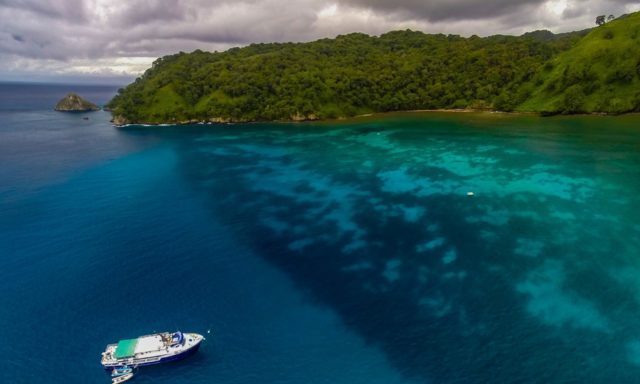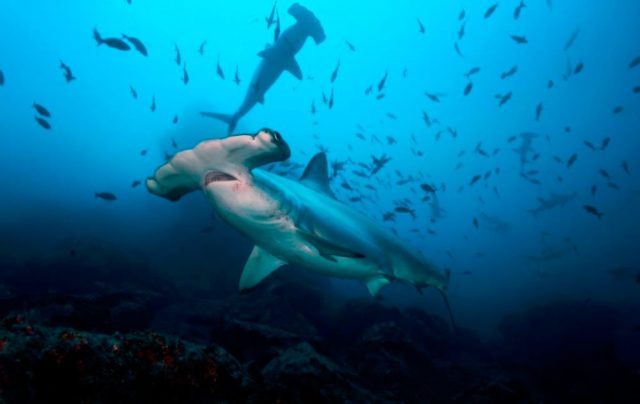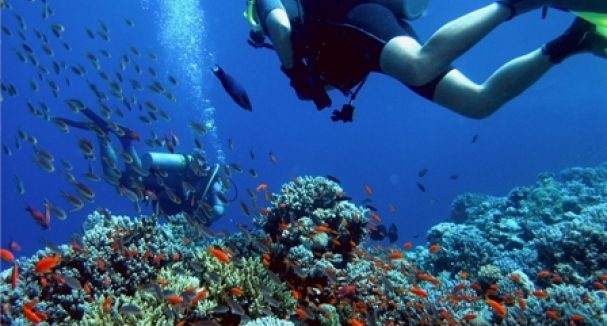| The Center for Research in Marine Sciences and Limnology (Cimar) of the University of Costa Rica (UCR) maintains constant monitoring in Isla del Coco in order to assess the current status of sharks, rays, and predators of the reefs. It is the 3rd expedition carried out by this center in the Costa Rican Pacific National Park. |

According to Mario Espinoza, Cimar scientist, the idea of expeditions is to know the status of sharks to generate data that can be compared with other countries, since 25% of sharks and rays are in danger of extinction because of factors such as overfishing, climate change and the destruction of habitats.
“Every marine organism has a function in the balance of the ecosystem. Sharks are large predators, located in the highest part of the food web (food chain) and when they are eliminated there may be consequences”, added Espinoza.
To carry out the monitoring, the experts place structures on the sea floor and in the water column with remote fishery cameras that constantly film the marine organisms that are approaching. In addition, the team is responsible for counting the number of species that were recorded, to later have data on diversity, species richness, and relative abundance.
Working together
The Cimar works with the park rangers of the National System of Conservation Areas (Sinac) through training to train them to learn to use different techniques and be themselves who perform the monitoring in the future.
Divers conducting research in sub-aquatic areas of Isla Los Cocos

“The idea is to go 2 or 3 times each year to see the changes that may occur during the same year. With the support of the park rangers, monitoring can continue after the project is closed at the University and this can be sustainable,” explains one of the scientists.
A number of sharks vary depending on the season of the year since many of the species are migratory. The project also monitors other sites in the Pacific Ocean, such as Isla Murciélago, Isla del Caño, Catalina Islands, Golfo Dulce and Isla Lora.
The research on Isla del Coco is financed with funds from the UCR, from the Special Fund for Higher Education (FEES), and with external financial support. According to the scientific advice of the Convention, the hammerhead shark population, listed as endangered species in 2014, has suffered reductions of up to 90% of its historic size.
Hammerhead shark living around Cocos Islands
Therefore, in April 2017, the Scientific Council recommended banning the export of products made from hammerhead shark for at least a year, until it demonstrates an improvement in the health of the population of the species or a decrease in its fishing sector.

Exclusive decree
In April 2017, the scientific council of Cites in Costa Rica issued a technical recommendation not to allow the export of hammerhead products for at least one year, until there was evidence or improvement in the health of the population or a reduction in Fishing. This advice was based on the inputs provided by a non-permanent shark commission made up of representatives of universities, conservation non-governmental organizations, public institutions and the longline fishing sector.
A responsible decision
Other countries joined the initiative to protect these animals. In the region, the governments of Colombia and Ecuador have developed campaigns to protect the hammerhead shark habitat areas.
